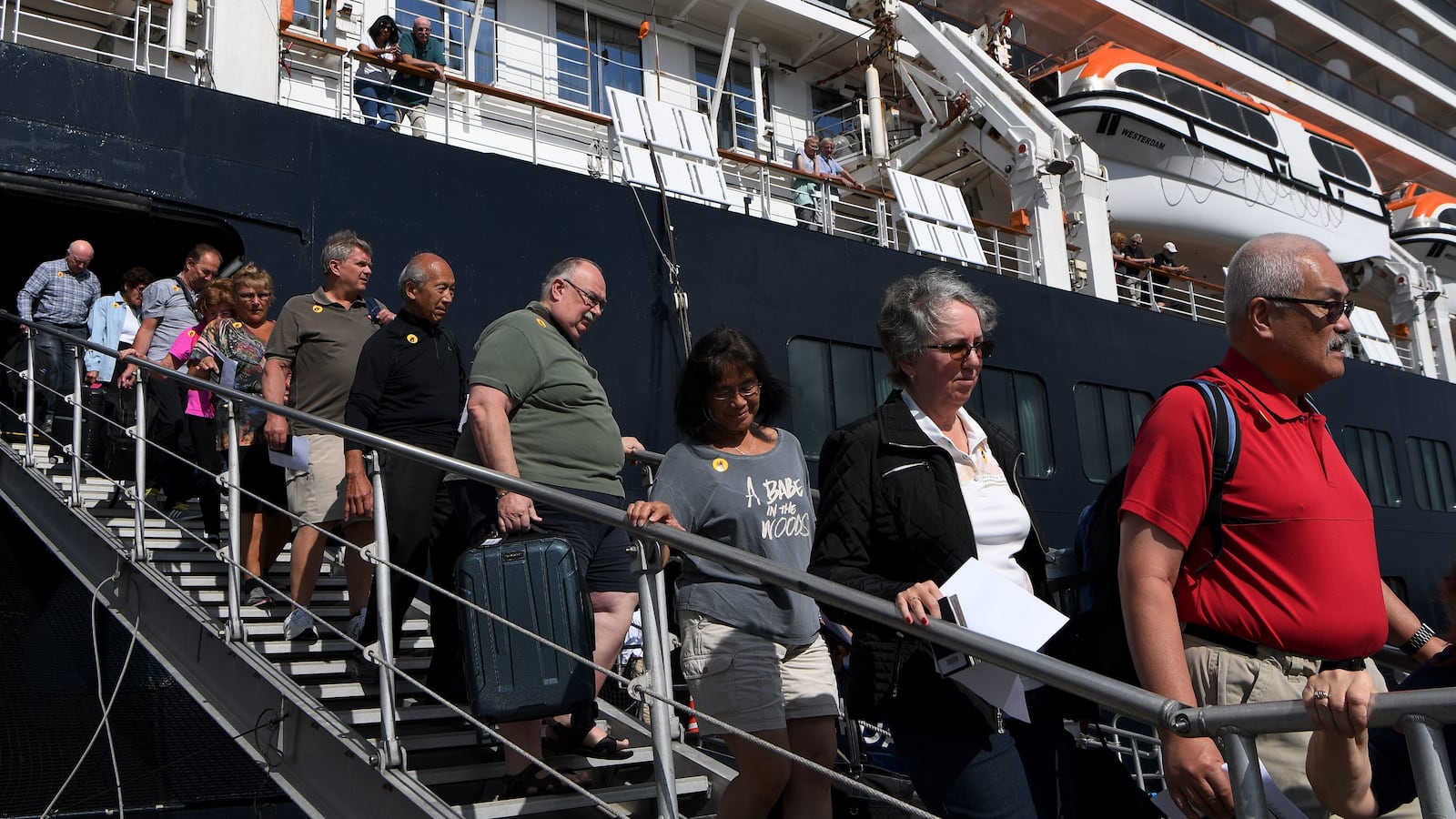Officials are scrambling to track down passengers who came into contact with an American woman who tested positive for coronavirus after leaving a cruise ship that was supposedly free of the bug.
The nightmare scenario linked to the MS Westerdam, which is docked in Cambodia, came as the U.S. evacuated Americans from another cruise liner, the Diamond Princess. More than 300 passengers, including 44 Americans, were infected on that voyage.
The MS Westerdam was stranded at sea for two weeks after Thailand, Japan, Taiwan, the Philippines, and Guam refused to let it dock because it had made a stop in Hong Kong.
It was finally allowed to dock in Cambodia and began disembarking passengers on Friday. An 83-year-old U.S. woman who got off with her husband flew to Malaysia with 145 other cruise passengers.
She later felt ill at the Kuala Lumpur airport and sought medical help. The Holland America cruise company confirmed Sunday that she had tested positive for COVID-19, as the new coronavirus originating from Wuhan, China, has been named.
Now health officials must track down other travelers, who have since dispersed, to make sure they get screened for the contagious illness.
“We are in close coordination with some of the leading health experts from around the world,” Dr. Grant Tarling, chief medical officer for Holland America Line, said in a statement.
“These experts are working with the appropriate national health authorities to investigate and follow-up with individuals who may have come in contact with the guest.”
Holland America said it screened 1,445 passengers on board Feb. 10 and did not find any elevated temperatures. “During the voyage there was no indication of COVID-19 on the ship,” it said.
But the cruise line said it had tested just 20 patients for the virus—all of whom visited the on-ship medical clinic—and all were negative. But the 83-year-old American never visited the clinic and was never tested.
If she was sick while on board the Westerdam and did not develop symptoms until later, it raises the question of whether other cruise passengers, who have gone on to final destinations, could fall into the same category.
The diagnosis underscores the continuing uncertainty about whether, and to what degree, the average patient can spread coronavirus before they show symptoms.
As the Westerdam situation unfolded, the U.S. evacuated about 300 Americans who had been quarantined on another cruise ship, the Diamond Princess, where 355 people were infected with coronavirus.
At least some of them will need to be quarantined for another two weeks once they arrive back in the U.S. Matthew Smith, who has been chronicling the on-board quarantine on Twitter, said he and his wife decided to stay behind.
COVID-19 has killed 1,770 people in China, 1o5 of them on Monday, the government announced. On Sunday, Chinese officials had been quick to point out that the number of new cases had declined the three previous day and credited their infection control measures—but the number crept up again on Monday.
The head of the World Health Organization cautioned that it was “impossible to predict which direction this epidemic will take,” and that unpredictability could be seen in Taiwan, where officials revealed the first person to die of coronavirus was a cab driver, who got sick after picking up passengers from China, Hong Kong and Macau. One of the man’s family members has also tested positive. Officials there are now trying to figure out who was in the man’s cab.







